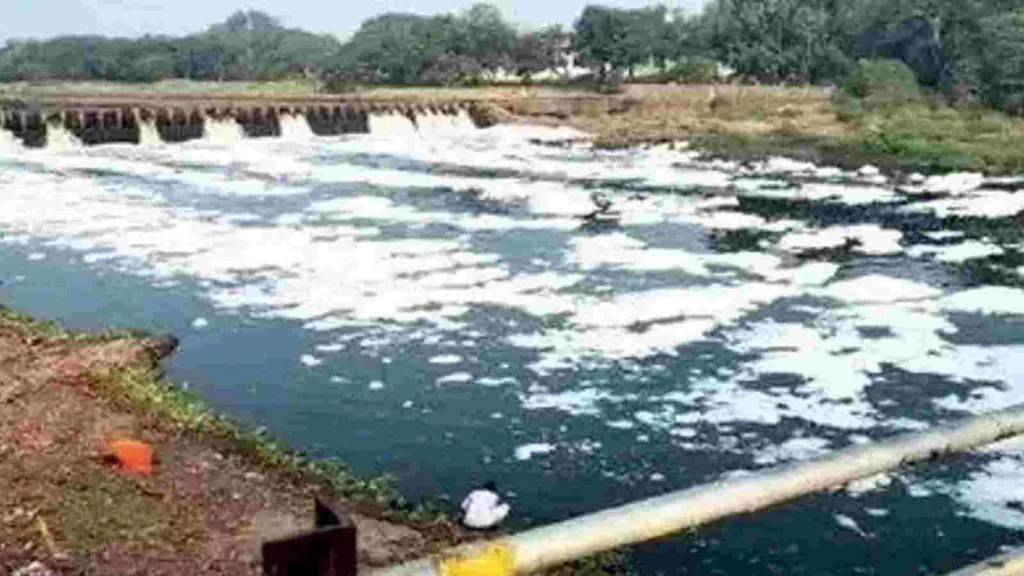MPCB Pune reviews Indrayani river pollution; Finds ‘this’ as a major cause

Pune: MPCB Issues Notice to Dehuroad Cantonment Board for Indrayani River Pollution
On 13th January (Saturday), the Maharashtra Pollution Control Board (MPCB) conducted a detailed review of the Indrayani River & other water bodies between Lonavala & Alandi stretch.
Speaking to Pune Pulse, Ravindra Andhale, Regional Officer, MPCB Pune, said “Numerous things were seen like current capacity for sewage treatment, water channels etc. Domestic sewage was seen. Water hyacinths were seen around the river due to the sewage. There are 5 to 6 bungalows near the river in Lonavala from where, most probably, the sewage is released into water. Hence, it was requested to install small Sewage Treatment Plants (STPs). This won’t create much difference but at least there will be some reduction in sewage. For installing huge STPs, you would need a lot of time, funds and more. However, with small STPs, there would be substantial differences in the situation.”
Ravindra Andhale continued “In the samples taken from the Indrayani River, the water quality was found to be average. Spots at Kudalwadi, Chikhali, Alandi etc were also inspected & reviewed. Pure sewage water was flowing. It was almost like there was no water present, only sewage was there. Now, a detailed discussion of the entire review will take place at MPCB in Mumbai after which an outcome will be decided. Also, some instructions were given to the PCMC regarding this.”
The member secretary of MPCB stated that when the river’s water flow is interrupted, an issue occurs. They have investigated the sources of river water contamination today. Domestic waste, such as sewage water, is a major source of pollution, but there are other waste sources associated with a number of unlicensed small- to medium-sized businesses along the river. Whether or not these industries play a significant part in contaminating river water remains to be determined. In order to verify contamination, he has given MPCB officials instructions to gather water samples from those areas outside of the regular sampling routes.
The member secretary continued that the main cause of pollution in river water is mostly untreated sewage from cities. Setting up STPs and sewage pipe connections is necessary, but it will take time to complete. Therefore, to reduce water pollution in the river, temporary fixes and phased implementation are required. In order to reduce water pollution, local authorities such as gram panchayats, municipal corporations, and municipal councils were instructed to devise natural solutions.
The visit by the member secretary of the MPCB shows that the matter has received serious consideration at the state level and that policy decisions may be made in the near future.
Shreyas Vange









